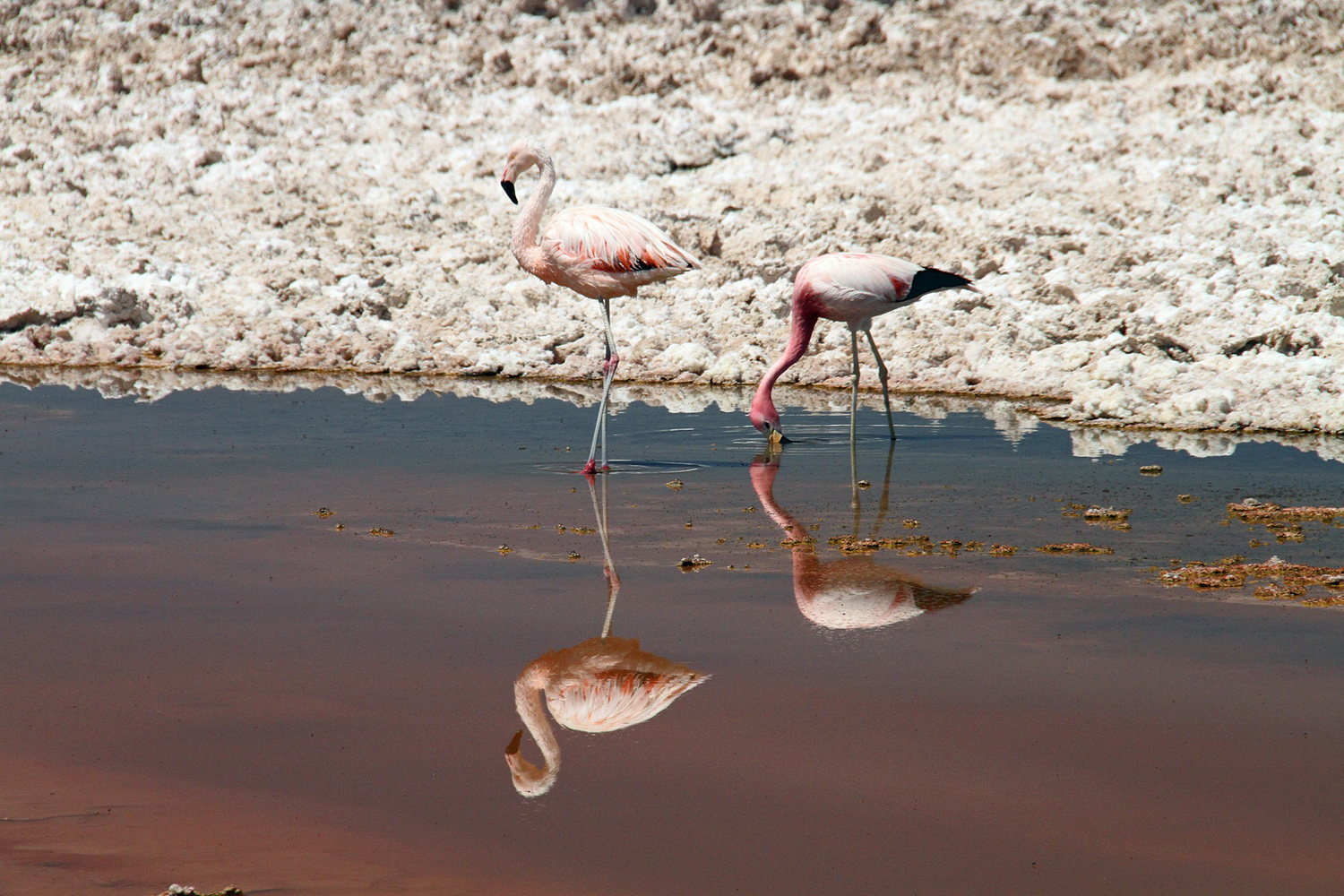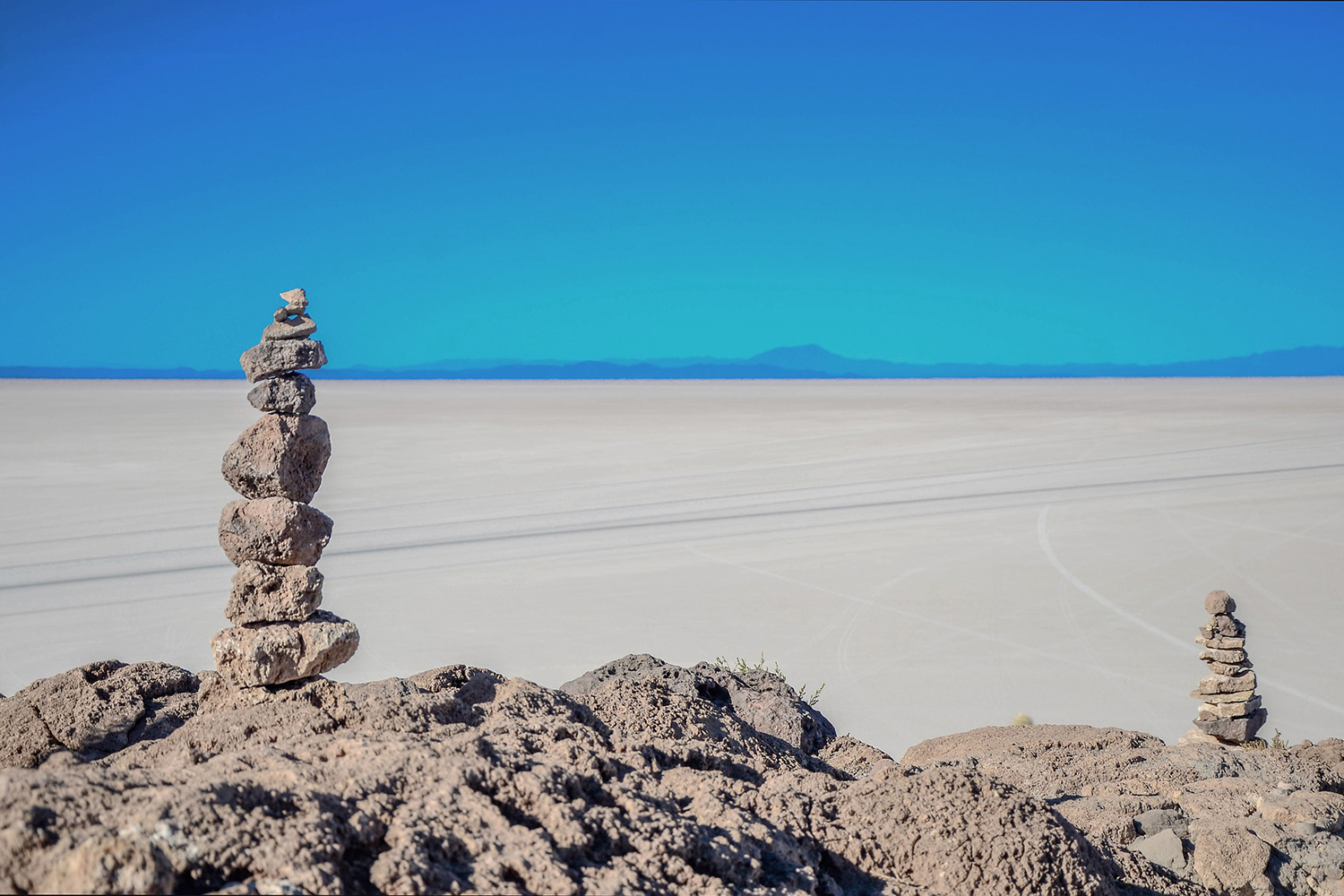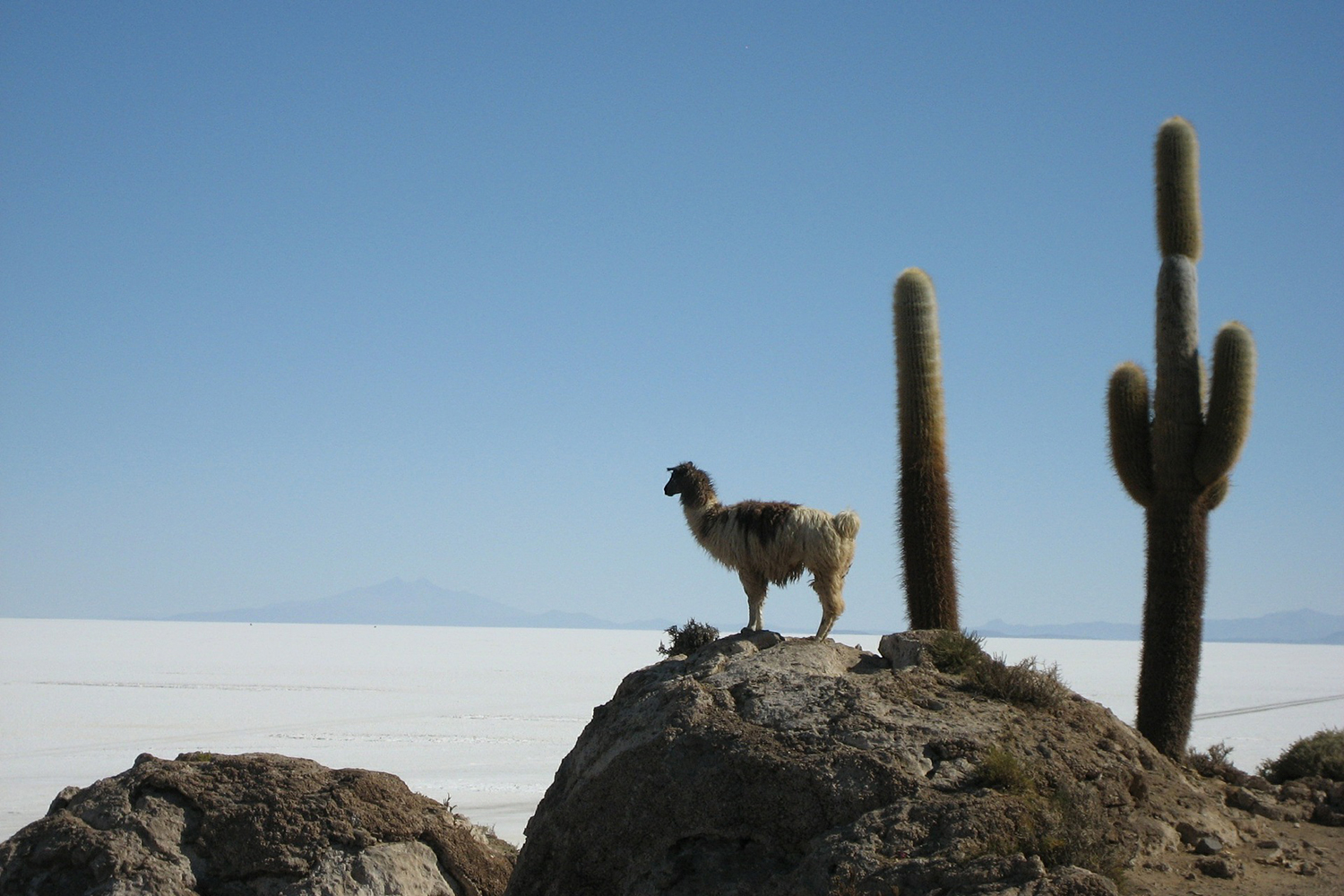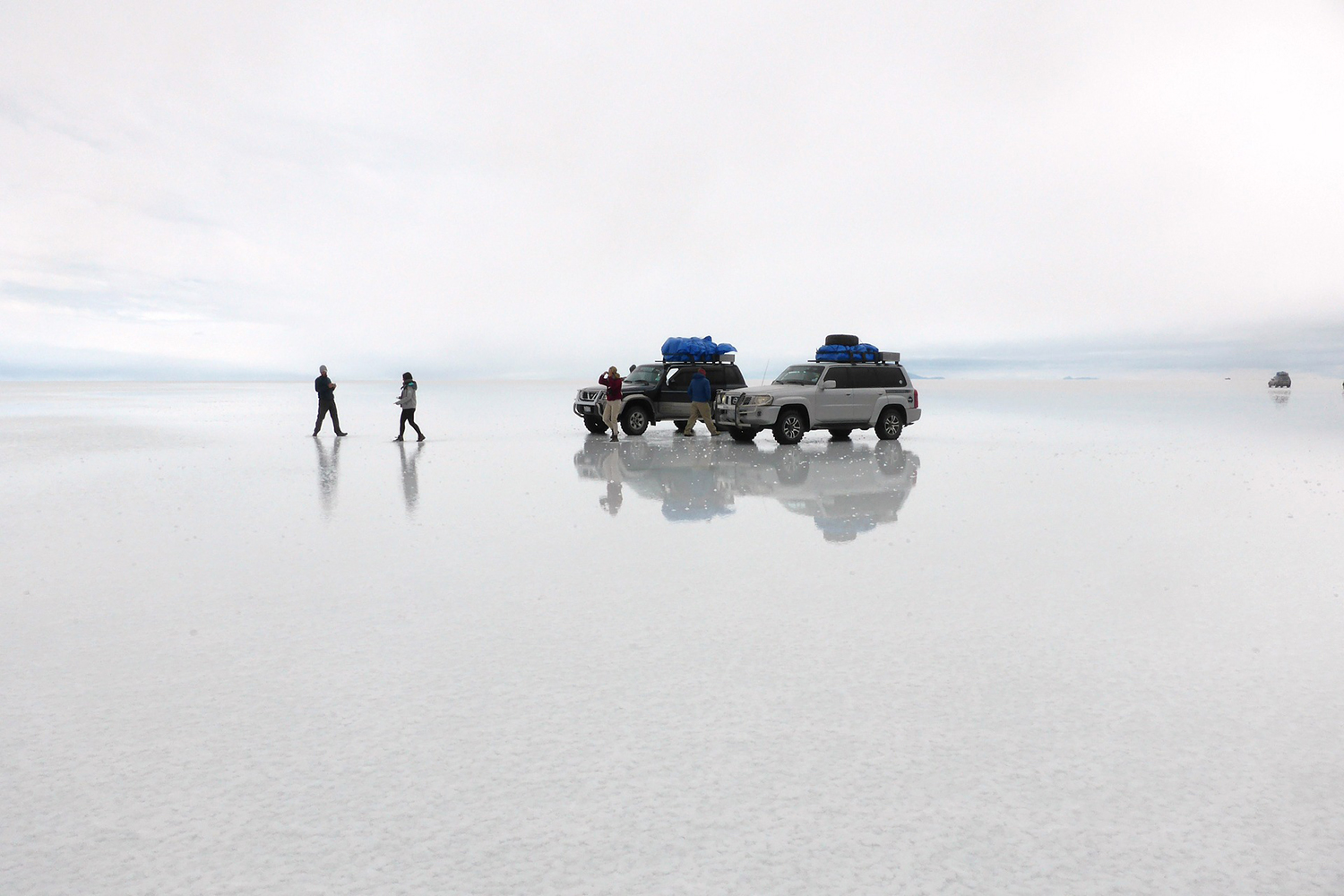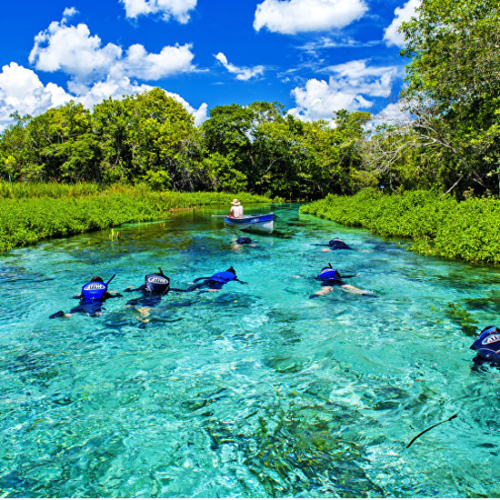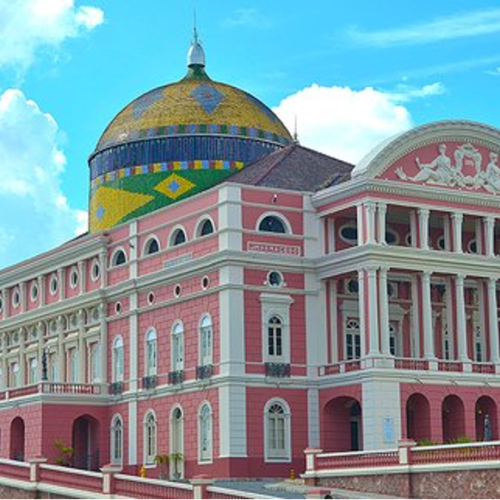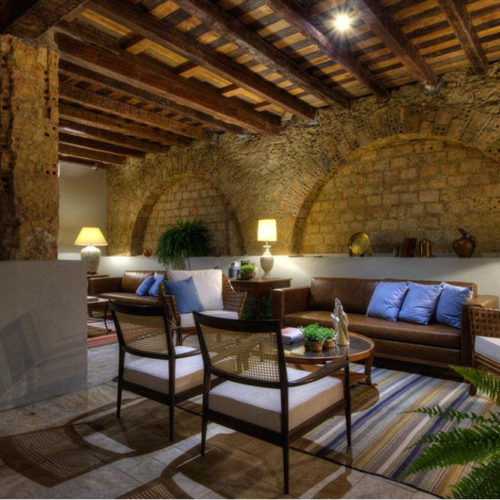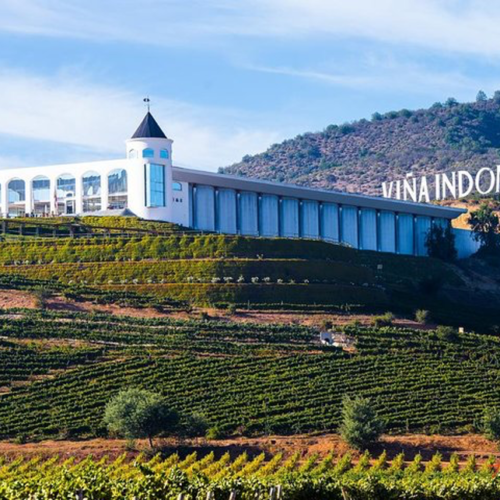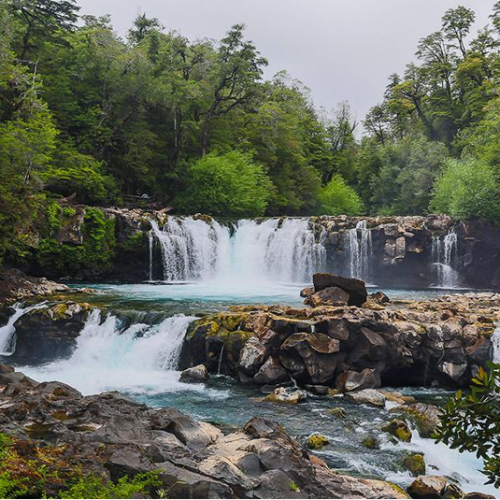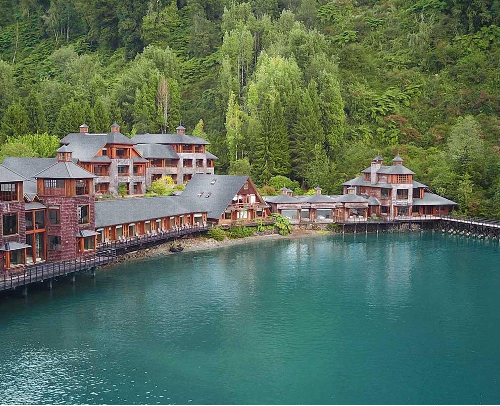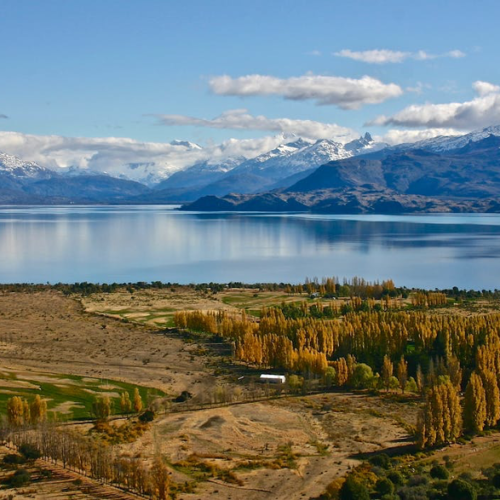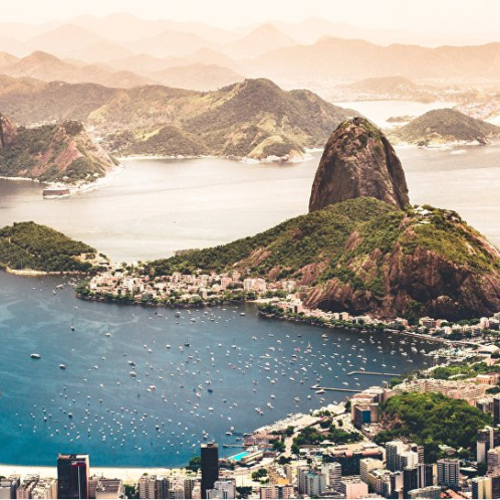From Atacama Desert to The Largest Salt Desert in the World
12 days / 11 nights
Overview
Stay for 4 days in San Pedro de Atacama (Chile), a town set on an arid high plateau in the Andes mountains of northeastern Chile and a great base to explore the dramatic surrounding landscapes: deserts, salt flats, volcanoes, geysers and hot springs. Visit The otherworldly “Valley of the Moon” in the nearby “Los Flamencos” National Reserve is a lunar like depression with unusual rock formations, a huge sand dune and pink-streaked mountains. Discover the geothermal field of Geysers del Tatio and capture unparalleled views of stars and the moon with the aid of 10 high-powered telescopes in an unforgettable stargazing tour. Cross borders into Bolivia and enjoy a 3-day exploration of the Uyuni Salt Flats to explore stunning natural wonders: the Salvador Dalí desert, Polque hot springs, the Geysers field, the spectacular high plateau lagoons, the Eduardo Avaroa natural park and, finally, the Uyuni Salt Flats, the largest salt desert in the world. The journey continues to Sucre, one of the finest cities in South America, a UNESCO World Heritage site filled with colonial architecture. Travel through mountains and valleys to Potosí, one of the highest cities in the world (13,420 feet) and home to the world’s largest known silver deposit. Visit this mining city with your private guide, exploring colonial streets and the artisan market, the National Mint of Bolivia, San Francisco church, and other highlights. The trip ends in La Paz, Bolivia’s capital, which is a beautiful destination and home to markets which are great for getting some handmade souvenirs as well as handmade leather goods.
Memorable Moments
- Discover the stunning Atacama Desert, with the imposing Piedras Rojas, the beautiful Chaxa, Miscanti and Miñiques Andean lagoons;
- Explore the extensive Atacama Salt Flats in the Los Flamencos National Reserve;
- Visit South America’s largest astronomical observatory and gain insight into the secrets of the night sky;
- Discover the sublime beauty of the Eduardo Avaroa National Park filled with unique Andean fauna, deserts, colored lagoons, geysers and volcanos;
- Bathe at the Polques hot springs;
- Marvel at the idyllic turquoise waters of the Green Lagoon;
- Witness pink flamingos lounging in their natural habitat at Colorada (Red) Lagoon;
- Explore the Salar de Uyuni, the largest salt flat in the world;
- Stay in a unique Salt Hotel
- Enjoy a beautiful sunset at the Uyuni Salt Flat followed by an unforgettable stargazing.
- Enjoy a visit to La Paz and visit traditional markets, architectural gems and landmarks;
- Delve into the depths of Potosi’s famous silver mine and visit the town’s Mint;
- Stroll the streets of Sucre, Bolivia's most beautiful city and UNESCO World Heritage site.
Itinerary at a glance
Day 1 – Santiago de Chile - Arrival
Day 2 – Fly to San Pedro de Atacama and visit Moon Valley
Day 3 – San Pedro de Atacama - Andean Lagoons, Salt Flats and Los Flamencos National Park
Day 4 – San Pedro de Atacama– Rainbow Valley and Rio Grande Village
Day 5 – San Pedro de Atacama– Tatio Geysers & Stargazing Tour
Day 6 – Siloli desert - Green Lagoon – Licancabur Volcano – Salvador Dali Desert & thermal baths
Day 7 – Uyuni Salt Flats - Lagoons of Altiplano & Colchani Village
Day 8 – Uyuni Salt Flats – Fly to La Paz
Day 9 – La Paz – Overview Tour and fly to Sucre
Day 10 – Sucre – Full Day tour of Potosi
Day 11 – Sucre – Overview Tour of Sucre and fly to La Paz
Day 12 – La Paz – Departure.
Pictures of this itinerary
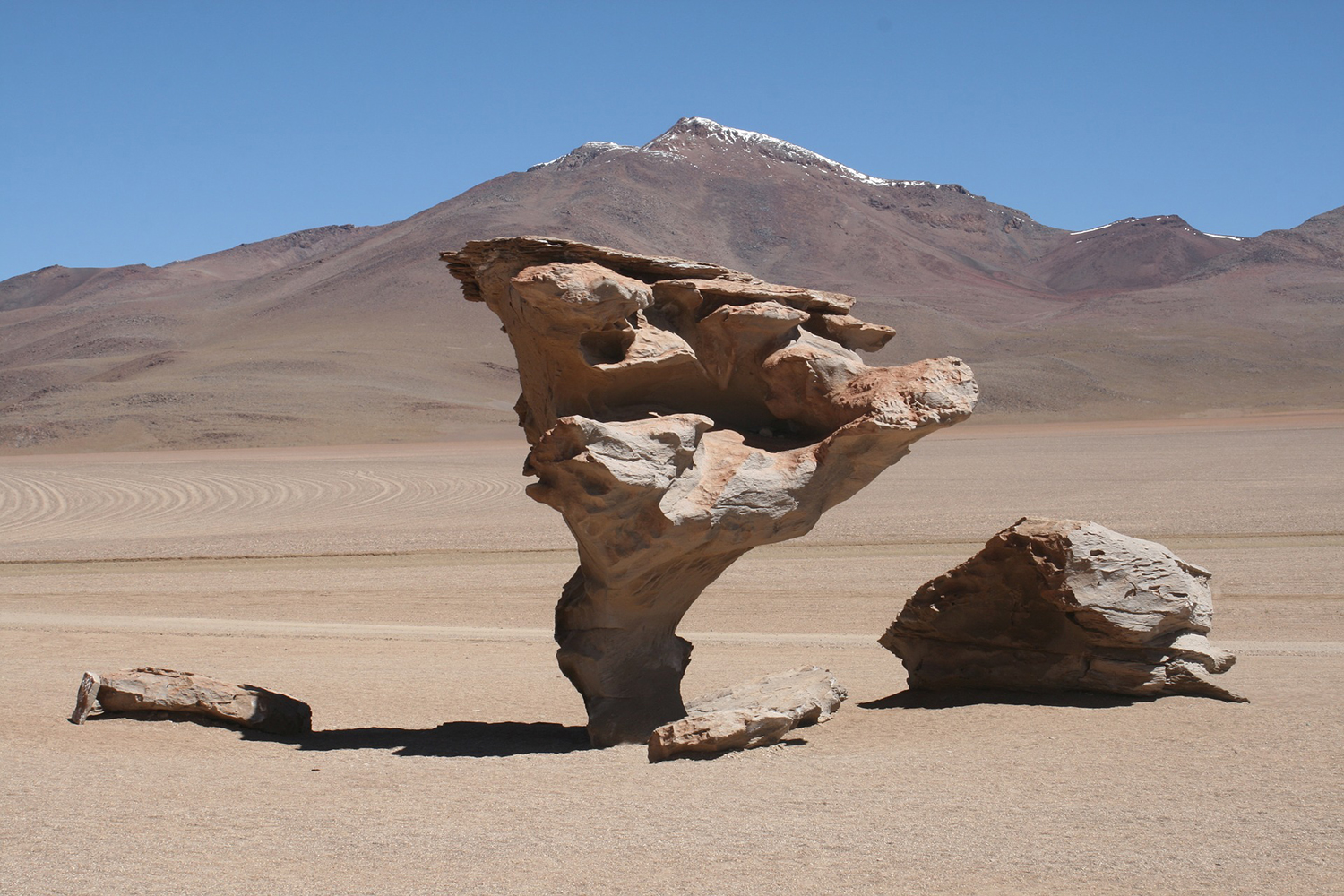


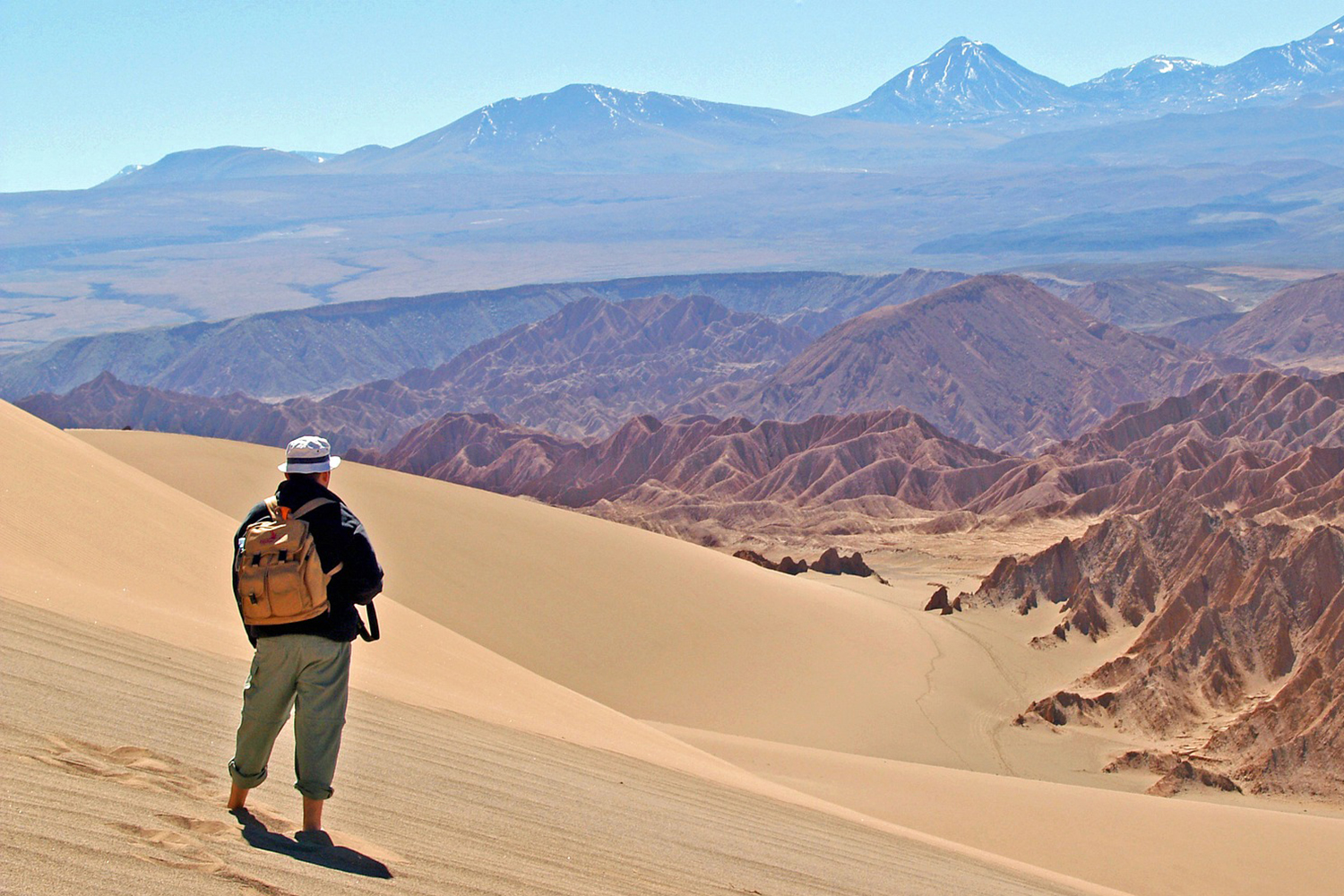
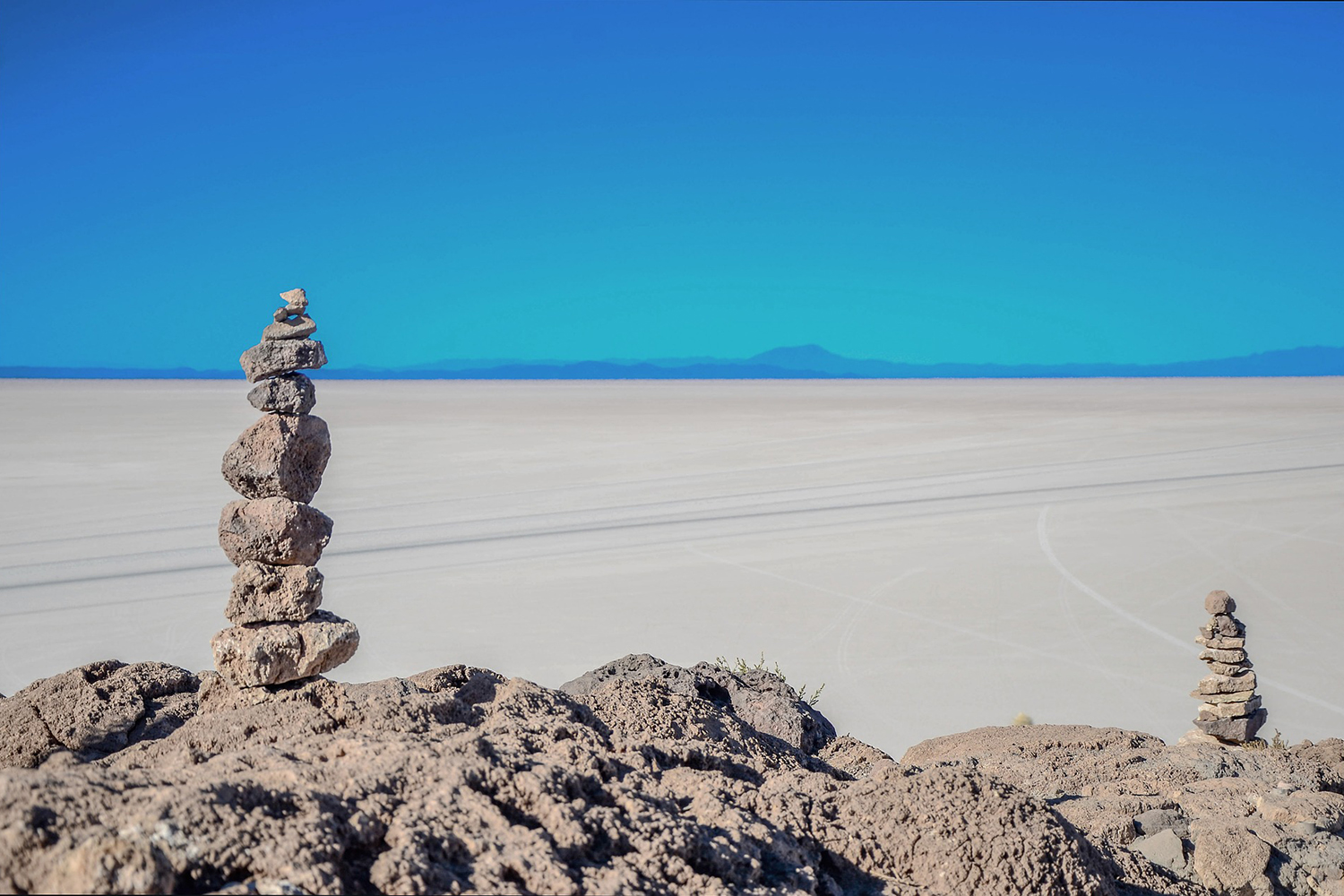
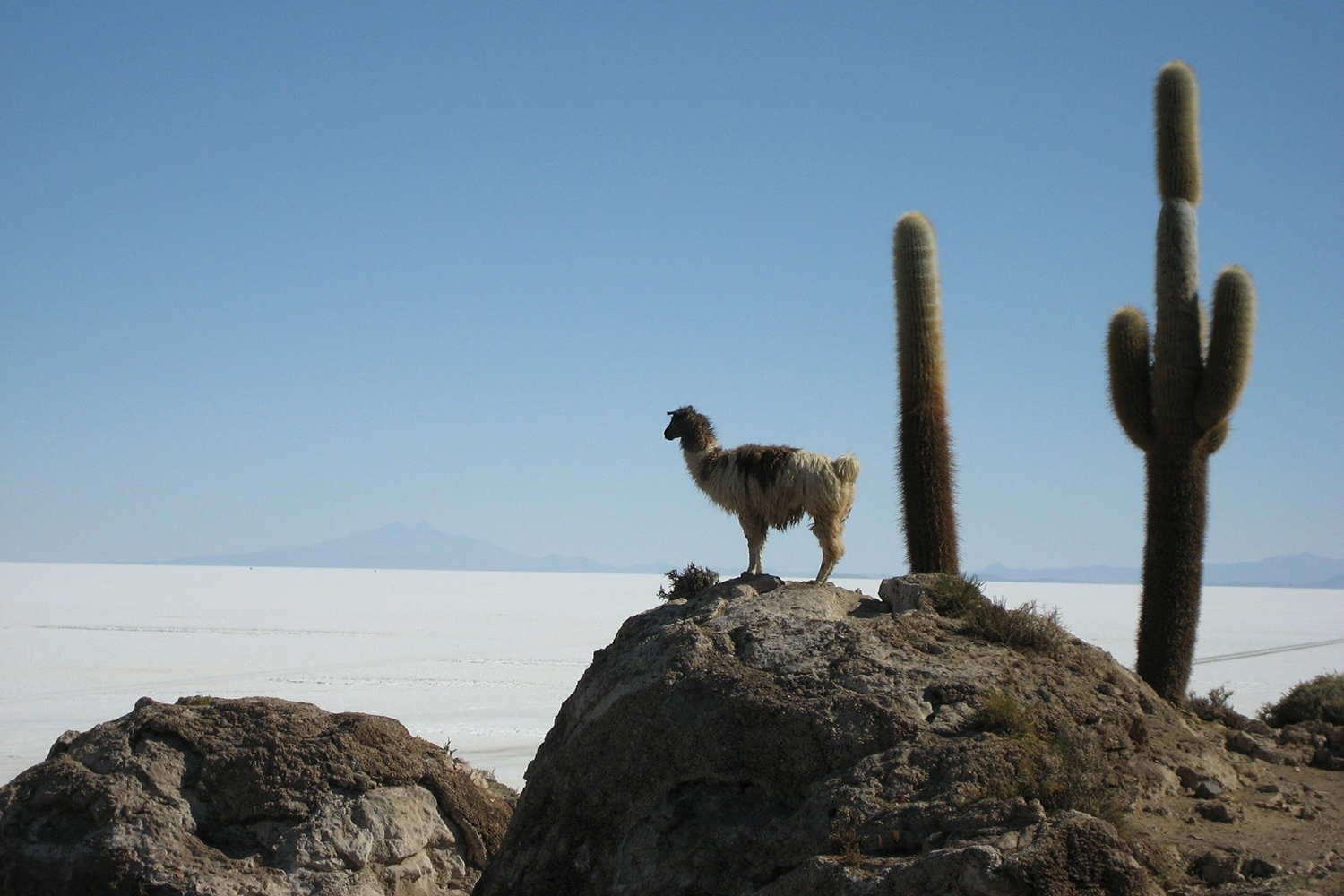
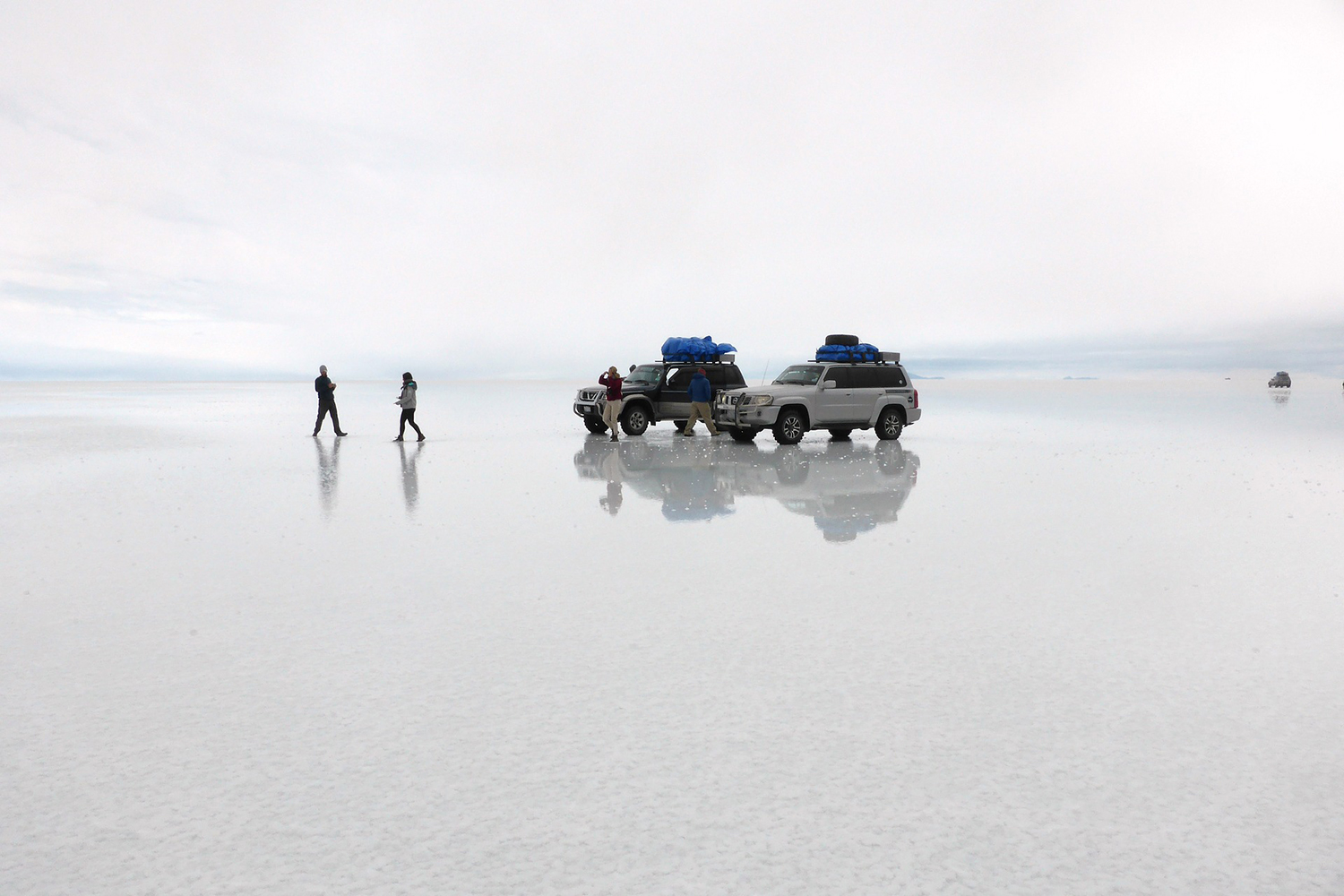
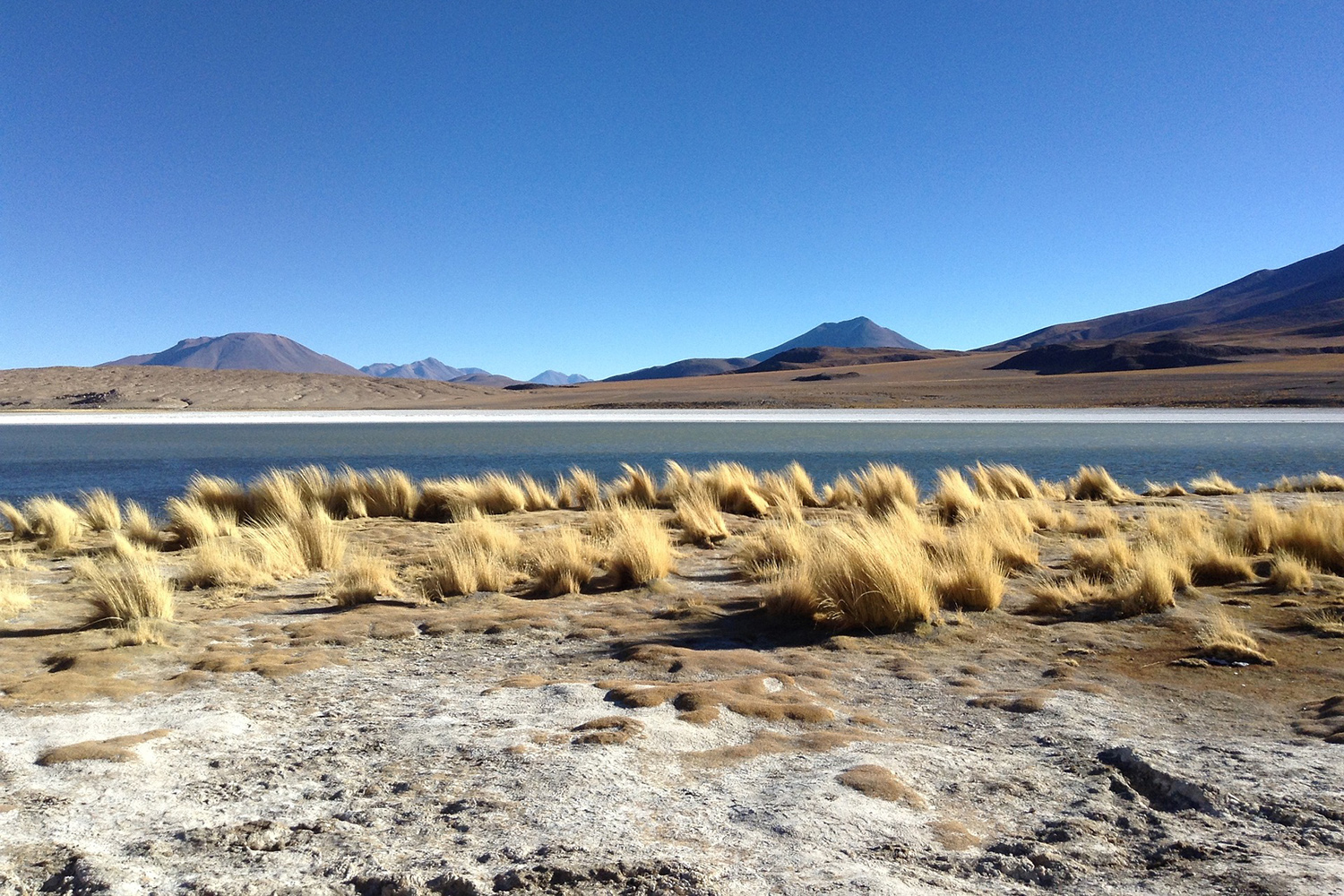
Full Itinerary
Upon arrival at Santiago de Chile, our English-speaking guide will meet you at the airport. Together with a professional driver you will be driven to your hotel in the city of Santiago de Chile. Afternoon at leisure.
Accommodation: The Singular Santiago
After checking out from your hotel, you will be transferred to “Paso Hito Cajon”, the legendary Bolivia-Chile border crossing. Your English-speaking guide will help you with migrations and once in Bolivia you will start the tour that includes the Licancabur Volcano and the Green Lagoon (named for its impressive emerald green color). You will visit the Thermal Baths of Polques (where you can enjoy a refreshing in the middle of the desert), Geysers, Laguna Colorada (a breeding place for the Andean flamingos migratory birds that are counted by thousands in their waters rich in minerals) and the Stone Tree (geomorphic formations caused by the erosion of the wind, located within the Eduardo Abaroa Reserve. Arrival and overnight in the Desert.
Meals: Lunch, Dinner.
Accommodation: Tayka del Desierto
This morning, we will visit “Capaña” and Hedionda” Lagoons and Ollagüe Volcano Viewpoint. We will continue our journey to Colchani village which is located just outside the Salar de Uyuni salt flats. This tiny village of just over 600 people is home to Bolivia’s largest salt-processing cooperative. Our tour also includes a visit to a traditional salt factory where locals will teach you the process of extraction and refinement of salt.
Meals: Breakfast, Lunch, Dinner.
Accommodation: Luna Salada
Following breakfast, we will visit the first Salt Hotel, now the museum of the place. Then we explore the Salt Desert and have plenty of time to take pictures and record videos. Late in the afternoon, we will transfer you to the airport to board your flight to La Paz. Upon arrival in La Paz airport, an English-speaking guide will welcome you and escort you to your hotel in the city of La Paz.
Meals: Lunch, Dinner.
Accommodation: La Casona Hotel
This morning we will do a complete overview tour of La Paz which includes its traditional market, its most important landmarks and architectural gems. Your tour will conclude at the top of El Alto, from where you will have stunning views of the city. Following lunch, we will visit one of its main street markets and we will visit the historic center of La Paz. Then, we will continue to the airport to take your flight to Sucre. Upon arrival at the airport you will be transferred to your hotel.
Meals: Lunch, Dinner.
Accommodation: Villa Antigua Hotel
Today we will tour the city of Potosi which retains an impeccable colonial style, and narrow cobbled streets. This city remains intact, not only in its architecture, but in the presence of native cultures, visit “the Mint” where impressive machines where coins were minted are preserved. Founded in 1546, Potosí was established after the discovery of what seemed to be an endless supply of silver deposits in the Cerro Rico mine. Consequently, in the 16th century during the times of the Spanish Empire, the city evolved into an important metropolis with a population larger that of Paris or London. These mines are possibly the richest in all of history, said to have produced over 60,000 tons of silver, according to legend — enough to build a bridge from Potosí to Madrid. Some of this enormous wealth was utilized in the construction of spectacular baroque churches and monasteries, part of the reason Potosí has been recognized as a UNESCO heritage site since 1987. Return to Sucre.
Meals: Lunch, Dinner.
Accommodation: Villa Antigua Hotel
Breakfast at the Hotel.
Start your day with a comprehensive tour of Sucre, the constitutional capital of Bolivia, which is also known as “The White City” due to the color of its extremely well-preserved colonial buildings. You will join a local guide for a tour of Sucre that combines the city’s colonial-era architecture with an introduction to Sucre’s thriving culture. You’ll get a taste of daily life in Sucre, from the UNESCO-listed historic center to the colorful “Mercado Campesino”, where vendors display fresh produce, renowned chocolate and handicrafts from the rural communities that surround Sucre. In the afternoon, you will fly back to La Paz. Upon arrival at the airport, your guide will drive you to your hotel.
Reception at the airport and private transfer to hotel.
Accommodation at La Casona Hotel Boutique 4* and Overnight. –
Meals: Lunch, Dinner.
Accommodation: Altiplanico
Spend the day at leisure exploring La Paz.
We will transfer you to airport for your flight home.
More pictures of this itinerary
Offers

Driving Argentina’s wild northwest: Mendoza to Jujuy on Ruta 40
SEE OFFERS

FAQ
Summer (November through March) is the best time to visit Southern Patagonia and Atacama Desert. The months from September to November and March to May are considered shoulder season for visiting the Atacama Desert. These months are the best to take advantage of pleasant temperatures and desert atmosphere.
The best time to go really depends on your preference of what you want to see. Some people prefer to go from May to November when the weather is mild, but the Bolivian salt flat plains will be dry.
The wet season is from January to April. The rain will make that beautiful mirror effect, an unbelievable image of infinity.
During the summer months the average temperatures are around 27°C (81°F) during the day and 16°C (61°F) at night.
The altitude at Bolivia, Uyuni is more than 3,500m (12,000 feet) above sea level and, believe it or not, during your trip you will climb even higher! For example, at Laguna Colorada, in the Eduardo Avaroa National Park, the altitude is 4,800m (15,700 feet).
This is a trip for Travelers who have a high fitness level, expect a vigorous pace, are comfortable participating in up to eight hours of physical activity per day, and enjoy challenging themselves physically.
Most tours are at a very active pace, with full day tours and a demanding daily schedule of physical activities such as trekking. Walking/Hiking tours can be on difficult terrain (up to 14 miles on uneven terrain, city hills, or narrow trails along steep hillsides with no railings). Travelers may be in remote and rugged regions with challenging terrain, possibly at high altitudes with steep ascents/descents. Leisure time may be limited (sometimes only in the later evenings). You should also take into account your stamina when traveling long distances and/or with multiple flight changes.
Altitude sickness can strike anywhere from elevations of 2,400 meters (7,874 feet) and upwards, although the vast majority of people will suffer no discomfort at all at that altitude. Interestingly, there is no correlation at all between age, fitness levels or gender and the extent to which people are prone to suffering from altitude sickness.
San Pedro de Atacama lies at the entrance to the driest desert on earth, the Atacama Desert. The town itself sits at an average of 2,407 meters, just over the threshold for altitude sickness so a minority of visitors experience mild discomfort such as dizziness or headaches. Again it’s not the town itself but the excursions you take while you’re there that tend to reach really high elevations. The explosive and unmissable Tatio Geysers are found at over 13,400 meters, which can cause minor problems for some, but should be fine for most.
Prior to your trip, we will provide you with packing tips and recommendations to avoid altitude sickness in Atacama Desert and Uyuni Salt Flats.
No, you will have very little to no signal and/or internet connection during your Salar de Uyuni trip. You will have wifi and cell phone signal at the hotel but it may be weak sporadically. Make the best out of this tour and take the opportunity to relax, unwind and forget about staying online for a while.
In Uyuni salt flats you will be in a very remote place with no restaurants, pharmacies or shops nearby. The tours are all-inclusive and they provide all the food you need (and the food is good, I must say), but you have to make sure to bring everything you may need with you (such as painkillers or other medicine you have to take ,etc).
Tip: If you have any dietary requirements or food intolerances (you are gluten-intolerant, vegetarian etc.) please tell us beforehand and discuss all these details with your coordinator in order to have everything you need by the time you arrive at these destinations.
Swimsuit, warm weather clothing, sunblock, hat and sunglasses. Warm jacket, trousers, sweater, fleece, windbreaker, gloves and hat. Binoculars for wildlife-watching and camera equipment for capturing your surroundings. Prior to your trip, we will provide you with packing tips and recommendations to avoid altitude sickness in both destinations, Atacama and Uyuni Salt Flats.
Yes. All passengers must present a negative COVID 19 (PCT-TR) test dated within 3 days of the flight if coming from a country bordering Bolivia, within 7 days of the flight if coming from within South and Central America, and within 10 days of the flight if coming from North America, Europe or Asia. All passengers will have their temperature taken prior to entering airports and the pre-boarding areas. Individuals with a fever or a temperature over 38°C (100.4°F) will be referred to the airport medical unit for a medical evaluation.
After you sign up for a trip with us, you will receive several pre-trip mailings with specific information about your destination; packing suggestions, etc. You will be able to download our app and have your own password. You will have access to your itinerary, real-time flight alerts and relevant information to help you prepare for your trip.
If you have further questions about the amazing Bolivia mirror lake, please leave a comment below and I will be happy to answer and update the document with further information.


